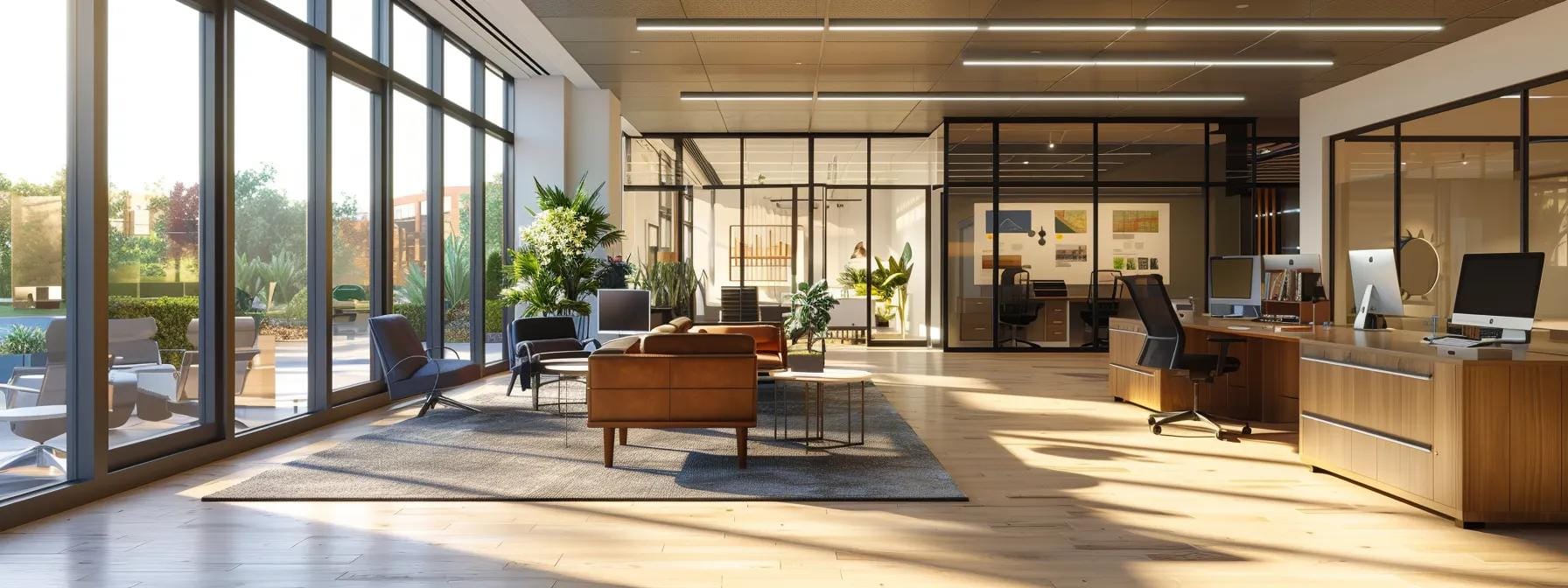
In emergency roof repair situations, homeowners in Norristown and surrounding areas face unexpected challenges that can quickly escalate repair costs. Whether damage is caused by severe weather—hailstorms, high winds, heavy rain—or by water or structural issues, understanding the key cost factors is critical. This article analyzes the main variables influencing emergency roof repair pricing in Norristown, including local weather patterns, building codes, material availability, and rapid response services. It also compares these factors to nearby regions, offering valuable context on cost differences and service availability. Homeowners will learn about the cost implications of repairs ranging from temporary leak patching to full roof replacements, differences between residential and commercial repairs, and practical strategies for saving money. Clear tables, concise lists, and expert insights help guide informed decision-making during stressful repair situations.
Transitioning from the overview, the following sections address the major factors influencing emergency roof repair costs in Norristown, compare these with nearby areas, and offer actionable recommendations.
Emergency roof repair costs in Norristown depend on several interrelated factors. Local weather conditions such as heavy rain, hail, and high winds not only damage roofs but can also complicate repairs—driving higher labor costs due to hazardous conditions. Strict local building codes require contractors to use specific materials and installation methods, raising expenses. Limited material availability due to supply chain issues can force contractors to source materials from distant suppliers, adding shipping costs. Additionally, rapid response emergency services, often offered 24/7, carry a premium when repairs occur outside regular business hours. Factors like roof complexity, number of layers, and the type of roofing material (asphalt shingles, metal, slate) also add to repair costs. A simplified table summarizes these factors:
Each factor can influence others. Homeowners should consider these variables to budget effectively during emergencies.
Local weather and building codes directly affect repair pricing. Severe weather—from heavy snowfall and ice accumulation to strong winds—can worsen roof damage, requiring rapid interventions such as immediate patching or complete roof replacements. For example, a hailstorm may necessitate prompt fixes to prevent water intrusion. Updated building codes often mandate the use of higher-grade materials or additional reinforcements, which increases material and labor costs. Safety precautions in adverse weather conditions, including extra fall protection and specialized equipment, also raise repair costs. Homeowners should obtain detailed explanations from contractors on how these factors influence pricing and stay informed on local code updates to help preempt future expensive repairs.
Material availability is critical in determining repair costs. When emergency repairs are needed, materials must be sourced quickly. In Norristown, local supply chain challenges or limited vendor stock can force contractors to import materials from afar, increasing both the material price and shipping fees. Shortages may lead to the use of alternative, sometimes less durable materials, affecting the long-term quality of repairs. Homeowners should inquire about material quality, sourcing, and any guarantees offered to avoid future repair costs linked to inferior products.
Rapid response is essential in emergency roof repairs, significantly influencing costs. When immediate service is needed, especially during off-hours or holidays, contractors charge premium rates to mobilize crews and quickly procure materials. These expedited services reduce further damage such as water intrusion but come with higher administrative, labor, and shipping fees. A brief table outlines key rapid response considerations:
While rapid responses minimize further damage and overall long-term costs, homeowners should be prepared for the immediate higher cost.

Comparing costs between Norristown and neighboring regions reveals valuable differences. In Norristown, costs may be higher due to local market dynamics, specific weather challenges, and contractor availability. In more competitive urban or suburban areas, lower base labor costs and quicker material sourcing may reduce overall expenses, although premium emergency fees can still apply. In rural areas, fewer contractors can mean higher costs due to longer travel times and limited supply chains. A comparison table offers a snapshot:
This analysis shows that while Norristown may incur higher costs due to its unique factors, competitive markets in surrounding regions might offer lower prices if rapid service is maintained.
In Norristown, typical emergency repairs range from $1,200 to $4,000 for standard fixes, with full roof replacements costing between $10,000 and $20,000 or more. Neighboring towns with milder weather and higher contractor competition may report slightly lower costs—sometimes 10%-20% less for full replacements—though slower response times in these areas can risk additional damage and higher overall costs.
Repair costs vary widely by region. Urban centers or suburbs with many qualified roofing contractors often enjoy competitive pricing due to efficient material sourcing and a robust contractor network, while rural or less populated areas with fewer contractors face higher costs driven by longer travel distances and limited services. Homeowners should consider factors like market competition, local supplier networks, and regional wage differences when comparing prices and negotiating repair terms.
Service availability and response times are crucial differences. In Norristown, 24/7 emergency service is common, ensuring rapid repairs and reduced risk of further damage, albeit with higher fees. In rural or less populated areas, service may be limited to standard business hours, potentially delaying repairs and increasing damage risks. Urban areas with high contractor density typically offer quick responses and competitive pricing. Factors like travel time, contractor scheduling, and local traffic conditions play key roles in these differences.
Different repair types result in varied costs. Temporary repairs such as leak detection and patching focus on quickly preventing further damage, typically costing between $300 and $1,000. Minor repairs that replace damaged shingles or sections of the roof can range from $1,200 to $4,000, while full roof replacements—requiring removal of old materials and installation of new systems—can cost $10,000 to $20,000 or more. Commercial repairs usually cost more per square foot than residential projects, due to larger scale, specialized equipment needs, and more complex regulatory requirements.
A concise table summarizes common repair types:
Leak detection and temporary patching are initial measures that quickly secure the roof. In Norristown, these services often use specialized tools like thermal imaging cameras and come at a premium, with prices fluctuating based on urgency and leak complexity. Temporary patching involves fast-tracked labor and materials designed for short-term protection; costs may increase during peak storm seasons or when local material supply is constrained.
Full roof replacements are major projects typically costing between $10,000 and $20,000 or more in Norristown. Variations in pricing depend on roofing materials, roof size, complexity, and local labor costs. In some neighboring areas, competitive markets may see full replacement costs reduced by 10%-20%, though savings may be offset by longer wait times or varying service quality. Factors such as roof pitch, multiple layers, and additional architectural features further influence these costs.
Commercial repairs generally cost more than residential ones due to scale and complexity. A residential repair in Norristown might range from $1,200 to $4,000, while commercial repairs can be two to three times higher per square foot. Commercial projects also require more extensive documentation, specialized equipment, and adherence to stricter timelines to minimize business disruption.

Homeowners and businesses can reduce emergency roof repair costs by adopting proactive strategies. Establishing a relationship with local roofing experts offers benefits such as faster response times, familiarity with local codes and conditions, and access to competitive material pricing through strong supplier networks. Reviewing transparent, itemized repair quotes helps avoid hidden fees, while regular preventive maintenance—such as seasonal inspections and minor repairs—can forestall serious damage and costly emergencies.
Additional saving measures include leveraging seasonal promotions, financing options, and maintaining detailed records of roof conditions to support price negotiations.
A summary of cost-saving measures:
Local roofing experts offer many advantages. They have in-depth knowledge of regional weather, building codes, and local supplier networks, which leads to faster, more accurate repairs using high-quality materials. Their community reputation fosters accountability and ensures clear communication and follow-up services. A rapid local response also minimizes further damage and long-term repair expenses.
Transparent pricing, which provides a detailed, itemized estimate, prevents surprises in repair bills. It lets homeowners see the breakdown of labor, materials, and emergency fees, enabling them to compare quotes and negotiate effectively. Clear pricing builds trust and minimizes future disputes over unforeseen costs.
Preventive maintenance is most beneficial when scheduled biannually or annually, particularly in late spring or early fall when weather conditions are moderate. Regular inspections and minor repairs reduce the risk of emergency situations. After severe weather events, prompt maintenance can catch small issues early. Establishing a maintenance contract with a trusted local contractor further spreads repair costs over time and improves long-term roof longevity.
Emergency roof repair services in Norristown are structured for rapid response and high-quality workmanship. Homeowners can expect an immediate on-site assessment, a safety review, a detailed damage report, and an action plan to stabilize the roof. Many providers offer 24/7 availability to prevent further damage such as water infiltration, which can lead to mold and structural weakening. Although these services command a premium, they ensure repairs that meet local building codes and industry standards using high-grade materials.
Key service expectations include: 1. Rapid On-Site Assessments – Quick evaluations to contain damage. 2. 24/7 Emergency Availability – Round-the-clock service minimizes risk. 3. Safety and Compliance Checks – Repairs meet local codes and standards. 4. High-Quality Materials – Durable materials protect against future damage. 5. Clear Communication – Transparent reporting and pricing build trust.
24/7 availability ensures that repairs can begin immediately after damage, reducing the chance of secondary issues such as water intrusion. Dedicated emergency teams, available at all hours, provide thorough assessments and immediate temporary fixes. This rapid response helps lower overall repair complexities and long-term damage, justifying the premium cost.
Durable repairs in Norristown adhere to strict industry best practices, local building codes, and the use of premium materials—ranging from robust asphalt shingles to advanced metal roofing systems. Certified roofing companies conduct regular inspections and follow-up services to ensure repair integrity. Customer reviews often highlight the high standards maintained by local professionals.
Customer reviews in Norristown consistently note that although emergency repairs are expensive, the high cost is balanced by the rapid response and long-lasting quality of the repairs. Homeowners appreciate clear, detailed communication, transparency in pricing, and the overall reliability of 24/7 services, which together provide significant value despite the higher upfront cost.

Accurate cost estimation begins with an on-site evaluation to assess the damage and identify any underlying structural issues. Contractors then classify the repair—temporary fix, partial, or full replacement—and provide an itemized estimate that details labor, materials, and emergency fees. The process relies on detailed information about the roof’s material, condition, age, and maintenance history, combined with local market labor and material rates. Transparent communication and any updates for unforeseen issues build trust between the contractor and the homeowner.
A table of required information typically includes:
Contractors need comprehensive details including roofing material type and age, visible damage extent, maintenance history, and current inspection findings. This information, combined with local market rates, allows for an itemized and transparent estimate covering all cost components.
Unexpected issues are managed with contingency clauses in quotes. Contractors inform homeowners immediately if additional problems are found, providing revised estimates and explanations. Flexibility and clear communication help control cost escalations during emergencies.
Homeowners should ask for an itemized estimate, inquire about contingencies for unforeseen issues, confirm there are no hidden fees, request warranty details, and ask for references from similar emergency projects. These questions ensure a clear, fair, and competitive repair quote.
Regional cost differences help homeowners budget effectively and evaluate service quality. Variations in labor rates, material sourcing, and contractor competition across regions can affect pricing. Understanding these differences enables homeowners to negotiate effectively and plan for potential emergencies by comparing local market trends.
A summary of key benefits: 1. Effective Budgeting – Accurate regional comparisons support financial planning. 2. Service Quality Assessment – Differences in price can indicate quality and expertise. 3. Negotiation Leverage – Informed homeowners are better positioned to negotiate. 4. Predictive Maintenance Planning – Understanding trends aids in scheduling preventive measures. 5. Market Awareness – Local insights lead to smarter contractor selections.
Comparing regional repair costs provides benchmarks for budgeting and helps homeowners assess if preventive maintenance might be more cost-effective than emergency repairs. It also offers leverage for negotiating better terms by highlighting differences in local service markets.
Opting for the lowest bid can involve risks such as substandard repairs, use of inferior materials, and insufficient labor. These choices may lead to recurring problems and higher long-term costs due to delays or additional damage. Homeowners should balance low cost against quality and transparent communication to avoid hidden future expenses.
Local expertise reduces long-term costs by ensuring fast, accurate repairs tailored to regional conditions. Experienced local contractors often secure high-quality materials at competitive prices and implement solutions designed for local weather and building codes. Their familiarity with preventive maintenance further lowers long-term repair expenses by addressing issues before they escalate.
Emergency roof repairs in Norristown are influenced by local weather, building codes, material availability, and rapid response requirements. Homeowners must understand these dynamics to secure timely, cost-effective repairs that protect their property’s long-term value. Detailed, transparent quotes from knowledgeable local experts and regional cost comparisons empower homeowners to make informed decisions. Ultimately, preventive maintenance and partnering with experienced roofing professionals are essential to minimize both immediate repair costs and future expenses.
Q: What factors most significantly influence emergency roof repair costs in Norristown? A: Key factors include local weather conditions, building codes, material availability, and the need for rapid response. Severe weather events and strict building standards increase labor and material costs, while emergency services incur premium fees.
Q: How do local weather conditions affect repair pricing? A: Local weather impacts pricing by determining the extent and severity of damage. Areas prone to hail, high winds, or heavy rain face higher repair costs due to immediate, specialized interventions and extra safety measures needed during repairs.
Q: Are there benefits to choosing local roofing experts over non-local providers? A: Yes. Local experts provide faster response times, are familiar with regional codes and weather patterns, and have established supplier relationships. This leads to more efficient repairs, better pricing on materials, and reduced long-term expenses.
Q: What should homeowners ask when receiving a repair quote? A: Homeowners should request an itemized quote detailing labor, material, and emergency fees, ask about contingencies for unforeseen damage, verify warranty coverage, and request references from similar projects.
Q: How can regional cost comparisons help with budgeting? A: By comparing repair costs in Norristown with nearby areas, homeowners can benchmark fair prices, negotiate better terms, and decide if preventive maintenance might be more cost-effective than emergency repairs.
Q: What risks are associated with opting for the lowest-cost repair option? A: The lowest bid may indicate the use of substandard materials, inexperienced labor, or inadequate emergency protocols. This can lead to recurring repairs and higher overall costs in the long run.
Q: Why is preventive maintenance important in managing emergency repair costs? A: Preventive maintenance identifies and fixes minor issues before they escalate, reducing the likelihood of costly emergencies. Regular inspections and timely repairs extend roof longevity and protect property value.


